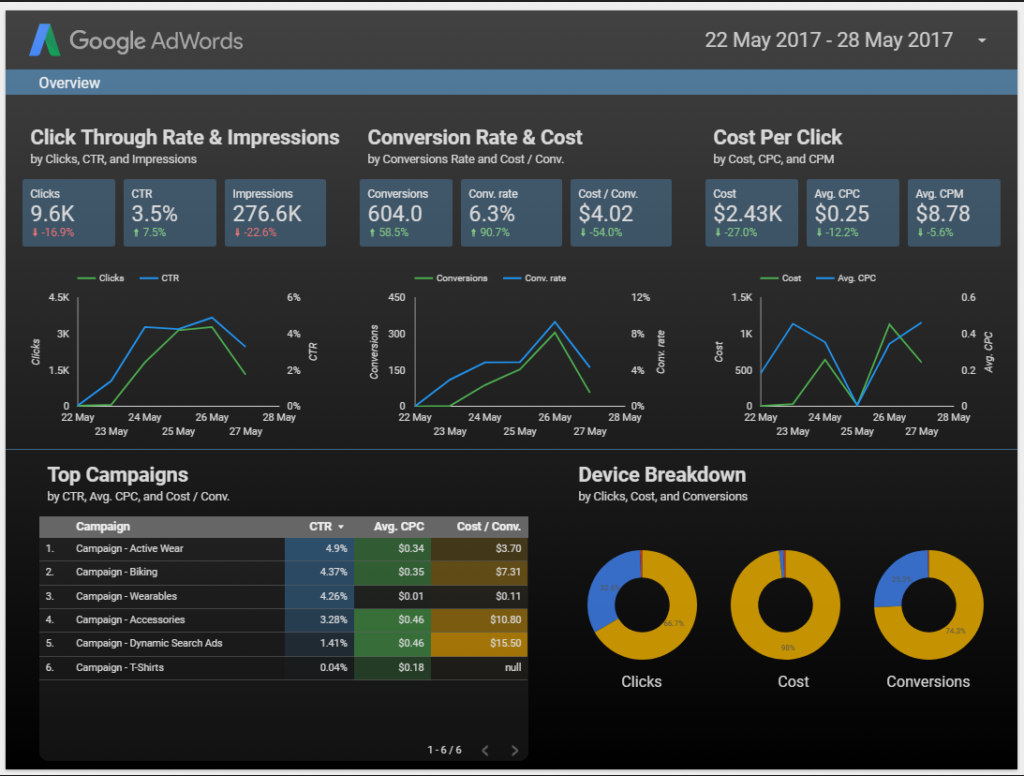You have hundreds of metrics to choose from, but only a select few belong on your scorecard.
Begin With the End in Mind
A marketing scorecard, similar to business scorecards, gives your team and other key players within the brand a regular update on how well you’re meeting goals. If you’ve identified meaningful goals and are passionate about reaching them, you already have the biggest reason to build and use a marketing scorecard.
A scorecard with well-chosen KPIs (key performance indicators) will reveal:
- which tactics are performing successfully
- which ones might, in fact, be a waste of your time
- where your budget can be re-tuned for better results
- and other insights generic reports can’t provide
But before you start a new scorecard and choose your KPIs, it’s critical to know and truly understand your marketing goal(s). What are you tasked with accomplishing in your campaigns?
For most brands, the goal is increased lead generation, heightened brand awareness, or some other user behavior that demonstrates engagement. Having a clear marketing objective behind your campaigns will make the next step—selecting your KPIs—easier and more productive.

Choosing Your KPIs: Keep it Relevant
A good scorecard should be short, insightful, and easy-to-interpret. Depending on the nature of your campaigns, you’ll probably have hundreds of potential metrics to choose from. Not all of them belong on your scorecard.
Be choosy when narrowing down your KPIs. You might be tempted to include more metrics than you should. If so, ask yourself, “How does this KPI show progress toward our marketing goal?”
Your Scorecard—Like Your Brand—Should Have Its Own Personality
Because not all marketing goals are the same, and because similar goals can be measured differently, only you will know which KPIs are right for your scorecard. As you look at your full battery of reports and analytics tools, consider going deeper and choosing a few KPIs that aren’t so obvious.
To get the creative juices flowing, here are five underrated KPIs that don’t fit into every marketing scorecard, but could be right for yours.
1. Top Landing Pages (non-paid search)
What it measures: The pages where most organic searchers entered the website
Why it’s important: The top pages report by itself can be a little misleading. Sure, those pages had the most views, but why and how did visitors get to those pages? Many of those pageviews could have been influenced by the design and navigation of your website. But looking at the top landing pages report—specifically for non-paid search—will more clearly show you where your SEO work is paying off in search engines.
2. Backlinks from Media Placements
What it measures: The total number of backlinks with SEO value from external domains to a campaign landing page
Why it’s important: If your brand has invested in PR, this KPI can show which media placements not only contributed to lead-gen, but also supported the brand’s SEO goals by delivering valuable backlinks.
3. Placement Rate
What it measures: Percent of successful placements relative to the number of pitches sent
Why it’s important: Getting quality media placements can be long, time-consuming work. By monitoring placement rate, you’ll gain visibility into the success of your efforts, and may even find efficiencies you didn’t know about. And for more PR-related KPIs, check out this article from Moz about optimizing your digital press coverage.
4. Digital ROI
What it measures: Among other things, how well your digital marketing “pays for itself” relative to your investment
Why it’s important: ROI occasionally gets dismissed as a measurement that only belongs on business scorecards. But KPIs like “visitors” and “pageviews” don’t always demonstrate actual business value. Consider digital ROI for your marketing scorecard. It’s an opportunity to prove that your work is effective and sustainable.
5. Net Promoter Score (NPS) for Marketing
What it measures: The loyalty of your brand’s customer relationships
Why it’s important: You can learn a lot about the results of your marketing work by asking customers a simple question: “How likely is it that you would recommend our service to a friend or colleague?” Of course, NPS isn’t inherently a marketing KPI. But if you consider the many ways your marketing work shapes customer relationships, there could be a smart, relevant way to use this in your scorecard.
The Marketing Scorecard as a Process, Not the Goal
Some KPIs are definitely better than others. But even with a scorecard of the very best KPIs, the real value comes from collaboration and discussion about it. So don’t just send your updated scorecard to the team and call it a day; make time every month (or week), to talk about its content.
In doing so, you’ll find that other departments have unique non-marketing perspectives which can unlock scorecard insights that might have gone unnoticed otherwise.
